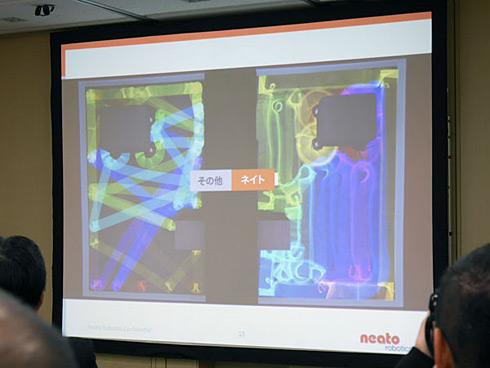"Rumba" movement is not "random" - US iRobot CEO Colin Angle's philosophy (page 1/2)
In recent years, new robot vacuum cleaners have entered the Japanese market one after another, and the number of cases where iRobot's "Rumba" is cited at the time of product announcement has increased. For new entrants, the leading Roomba is a good benchmark. In particular, Roomba, which cleans the same place repeatedly, is often argued as "inefficient." However, Colin Angle, CEO of iRobot, who came to Japan, introduced his company's technology and philosophy, and directly refuted such criticism.
iRobot CEO Colin Angle came to JapanThe criticism that the Roomba is inefficient is mainly due to the navigation system. For example, in the United States, Neato Robotics, which has the second largest market share after iRobot, uses SLAM (Simultaneous Localization And Mapping) and a laser sensor to grasp the shape of the room and the layout of the furniture, and always starts in a straight line from the right wall. Start cleaning with a trajectory, and clean the room as if it were painted over. Do not clean the same place twice. Marini Giacomo, CEO of Neato Robotics in the United States, said, "There are competing products that clean in a random trajectory, but in comparison, they complete cleaning in about a quarter of the time."

In response to these opinions, Mr. Angle first denies the word "random". "The Roomba is not 'random'. In the case of the Roomba, we use the same algorithms we use to clear landmines. It's a way to get there." This is a response unique to iRobot, which develops a wide range of robots, from military use to disaster sites and telemedicine.
iRobot's four business fields (the photo is from when the Roomba 800 series was announced)Robot technology is used in a variety of places, from the military to disaster sites and telemedicine small>On top of that, ``If the robot vacuum cleaner only follows systematically directed paths, there is a risk that there will be places that cannot be cleaned systematically. "Even when it does, Roomba will somehow find a way to clean the back of the furniture, but other vacuum cleaners that work systematically will never get there."
However, when it comes to the length of cleaning time, "There are two answers, yes and no." “Yes, because the Roomba is designed to thoroughly clean a room, first and foremost, using Dirt Detect technology to go back and forth in the same spot five times to eliminate any uncleaned spots. So it's not wrong to point out that 'time is too long,' but it's a result that we should be satisfied with." And the "no" part is, "All you have to do is press the button on the top. You don't have to do anything while the robot is cleaning. Will it take a long time?" ).
Rumba 880, the current top-of-the-line modelThe difference in the system comes from the difference in the "philosophy" of each entrepreneur. "The idea of systematic movement is to minimize the work time. Perhaps because the battery doesn't last, they want to finish cleaning by then."
What are the unique features of Roomba? 1|2Next page